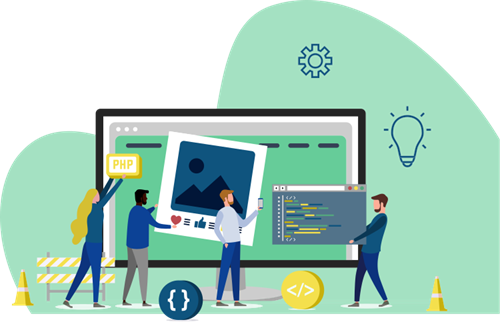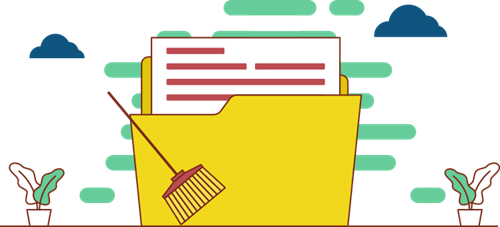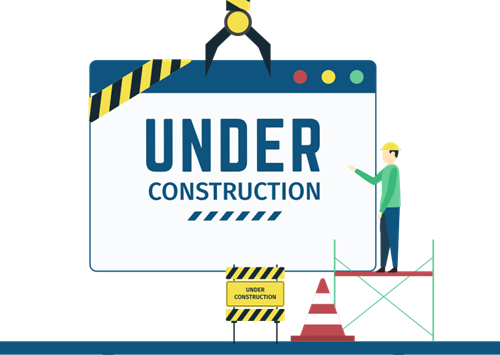Last Modified: 12/26/23
Website design is infamous for taking too long, ending over budget, and providing a finished product that doesn’t satisfy the needs of the business. Planning ahead and relying on the experience of experts will significantly alter your course for the better. Below we’ve detailed several considerations when you set out to build new or redesign your website.

-
Do you know which web platform you will be building the new site on?
There are a lot of options out there, and they all have their list of pros and cons. One web platform may be a good choice for company A but bad for company B, so it is always a good idea to work with an agency that has experience with a range of platforms. Always look at 2-3 different platforms when weighing the best choice for your business.
The web platform should make sense for your business and not just what the agency or designer is familiar with. Some popular options below:- Wordpress - Good for personal websites and small businesses who just need a simple site and blog, a lot of security issues
- Wix/Weebly/Squarespace - Not very customizable or fast, but cheap and easy to set up, great for personal blogs
- Webflow - Highly customizable and great for sites with fewer than 10 pages, but not great for managing and publishing a large library of content on bigger sites
- Umbraco - Fast and robust, easy to manage content, completely customizable, great choice for mid-sized and enterprise businesses
- Joomla - Great for developers, but less intuitive for most marketers as there is a steep learning curve
- Shopify / BigCommerce - Good for ecommerce with plenty of easy to integrate payment options, however the blog functionality is not as good as Wordpress’s
- Drupal / Magento / Episerver / SiteCore - Enterprise web platforms that are expensive to maintain but are great for complicated sites with considerable data integrations
Agencies tend to size the web platform up to the business, meaning a $100m+ revenue business would get pitched with Episerver or Sitecore while a smaller business under $1m might be a better fit for Wordpress, Wix, Weebly or Squarespace.
- Wordpress - Good for personal websites and small businesses who just need a simple site and blog, a lot of security issues
-
Design the website for your audience and all stages of the buyer's journey
Your site should be designed with the end-user in mind, including where they are at in their buyer’s journey.
A great website has an intuitive flow that will seamlessly guide prospects deeper into your funnel as they navigate through your content.
Building out top-of-funnel content like blog posts is just as important as bottom-of-funnel content like case studies, whitepapers, or webinars. -
Build a spreadsheet with content that is staying, and content getting trimmed
You need to figure out what content will be making its way to the new site, and which content will be getting trimmed. It’s best to look at the analytics to determine which pages are your most highly trafficked, but don’t always use that as the source of truth as your current web design may have led to more traffic in certain areas.

Follow the process below:- Use a tool like Screaming Frog to crawl your site and pull all URLs
- Export these URLs to a spreadsheet
- Go to your analytics account and pull pageviews by URL from the last year and export to a spreadsheet
- If you have Google Search Console setup, export a list from the past 12 months of data that includes all URLs and the organic traffic they are generating from Google
- Keep pages that are generating a lot of organic traffic as seen in the Search Console report
- Looking at the analytics report, keep pages that are heavily trafficked, remembering that your current web design might be why certain pages get the most traffic
- In the Screaming Frog exported spreadsheet, do comparisons with the other reports and use a red (cut), green (keep), yellow (maybe keep) or similar color convention to make it easily readable
- Use this list as a guide post when mapping out your new site’s architecture
This simple process can quickly help you determine where your most valuable pages are, if you don’t have analytics or Search Console setup you can set it up on your current website and wait a couple weeks to generate a small sample of data.
-
Will you be designing the website from scratch, or using a template?
Both methods can give you a great end result, the advantages of building from scratch are that your site usually ends up being faster and cleaner than building from a template which might have a significant amount of irrelevant code in the templates that is never needed. The big downside to building from scratch is it takes a lot more development time and a custom coded website isn't always easy to add or manage content for marketers.
Building off templates is the most common way to build websites and gives you the most flexibility when growing the website in the future. -
Are the developers up to date on modern SEO best practices?
A lot has changed in the past 10 years, even more has changed in the past 3. If your developers or marketers are working off of design practices from years past you can easily end up with a site that is not optimized for search and loses out on a huge opportunity of free search traffic.
Some things to think about:- Are your page titles, meta descriptions, image alt text and URLs properly structured?
- Is your site responsive? Does it have a great mobile experience?
- Is it fast? Do all pages load in 3 seconds or less?
- Have you tested the site on all browsers?
- Are you adhering to current privacy policies like GDPR (EU) & CCPR (California)?
- Is your sitemap and robots.txt properly setup?
- Is anyone monitoring Google Search Console for common errors?
- Are you using an SSL to obtain a secure HTTPS URL?
- Do your pages have the proper structured schema data?
It isn’t uncommon for a developer and an SEO consultant to be at odds, what makes sense in development doesn’t always translate into a search engine friendly website.
Leaving SEO out of your web design conversations will cost you a huge amount in the long-term as you lose out on free, qualified, organic search traffic. -
Test your user interface for good usability
Does the user interface of your website make it easy for your audience to navigate your site and quickly find what they are looking for? Using a lot of animation, video, and GIFs will make for a flashy, visual experience, but the reality is the majority of the time you don’t want unnecessary distractions on your site.
Clean websites with modern user interface conventions and occasional added flare where it makes sense will end up giving you a website that ends up with a lower bounce rate.
We recommend using heatmapping tracking to see how current users are navigating the website. A couple of popular options are HotJar, CrazyEgg, and Mouseflow, which will all let you see where you might need to make usability improvements across your website. -
Create an upgrade and maintenance plan
Don't get stuck without an upgrade and maintenance plan, it can be costly to have to figure this out after the site has been built. Our preference at jumpany is to use hosting solutions that give the client a painless and maintenance free automatic update plan. Your website's security depends on keeping your platform and any related plugins or extensions up to date to avoid vulnerabilities. Even if you don't have customer data that can be compromised, you still have your brand's reputation at stake.
-
Governance of the website: who adds content, who manages users?
People rarely stay at one company for life, so make a concerted effort to ensure your website governance is set up for success from the start. Build a list of employees who will be editors or content managers and another smaller list for admins who manage those users and their permissions.
Your goal is to avoid situations where someone who has left the company could potentially access the website and do considerable harm. Or the scenario where you're locked out of your own website because no one knows the password of the former web admin. -
Make sure your call-to-actions are easy to find
Don't make it difficult for prospects to find your call-to-actions such as the contact us or purchase buttons for ecommerce. Making it easier for your prospects to convert into leads or sales by having CTAs above the fold as well as built into your blogs where appropriate.
Looking for help on your next web design project?
Come talk to us with a free consultation and we’ll walk you through our web design process that ensures your website gets built on-time and on-budget.